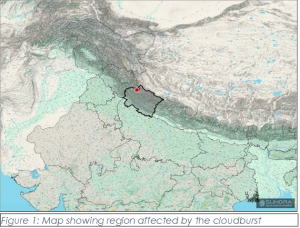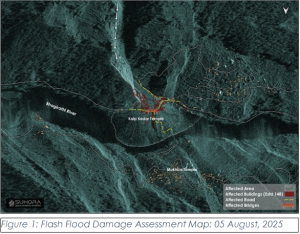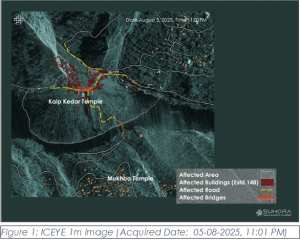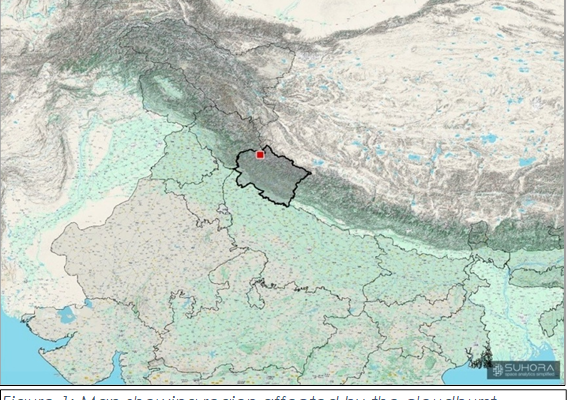Suhora Technologies releases Satellite-Based Assessment of Dharali Flash Flood Impact in Uttarkashi
Following the recent flash floods in the Uttarkashi region of Uttarakhand, Suhora Technologies, a leading company in Earth observation and space data analytics has released an analysis on the overall impact of the flash flood damage at Dharali, Uttarkashi.
The recent cloudburst in the upper catchment of the Kheerganga River triggered a flash flood in Uttarkashi’s Dharali village causing severe damage to infrastructure and resulted in casualties.
As per the recent media reports, some experts suspect a glacial burst as the cause of the flash floods. However, Suhora Technologies confirmed through satellite intelligence that floods were caused by cloudburst. Suhora examined data from the National Remote Sensing Centre (NRSC) and also its own comprehensive glacial lake inventory along with cross-checking through high-resolution optical imagery to verify that there are no glacial lakes present upstream of Dharali village, thereby ruling out a glacial burst as the cause of the flash floods.
Suhora conducted the analysis using Synthetic Aperture Radar (SAR) and high-resolution optical imagery to identify the disaster-hit zones resulting from this catastrophic event. Suhora acquired Synthetic Aperture Radar (SAR) imagery at 11:01 PM on August 5 through its platform, SPADE, which delivered the image in near real-time, enabling timely and accurate analysis of the disaster.


According to the analysis by Suhora Technologies, approximately 16 hectares of area have been affected, impacting nearly 148 buildings and resulting in widespread disruption to housing, schools, and public infrastructure. In addition, 1 bridge has been damaged, and about 0.95 km of road has been affected, leading to significant road closures and interruptions in connectivity.


Highlights and Emerging Concerns from the Uttarkashi Flash Flood
- Several homes and farmlands were inundated.
- Portions of the NH-34 route to Gangotri were temporarily blocked due to debris.
- Power and communication lines were disrupted in surrounding areas.
- Missing report of 100+ lives was reported, though multiple families were displaced and livestock loss was significant.
Krishanu Acharya, CEO of Suhora Technologies said “This incident is a stark reminder of the increasing vulnerability of Himalayan regions to climate-induced natural hazards, emphasizing the need for proactive policy, planning, and community resilience strategies. Space data analytics can play a critical role in disaster management and can provide actionable insights to government agencies, policymakers and companies, thereby enhancing their ability to respond effectively and build greater resilience against future disasters.”






